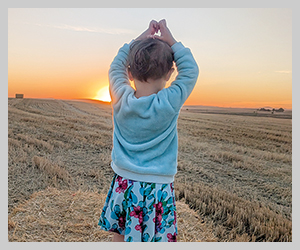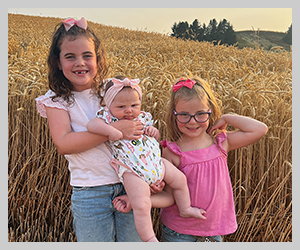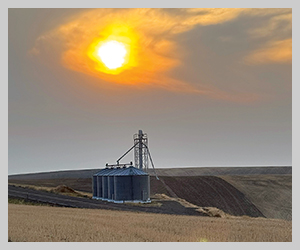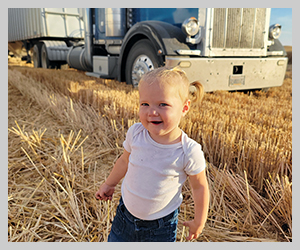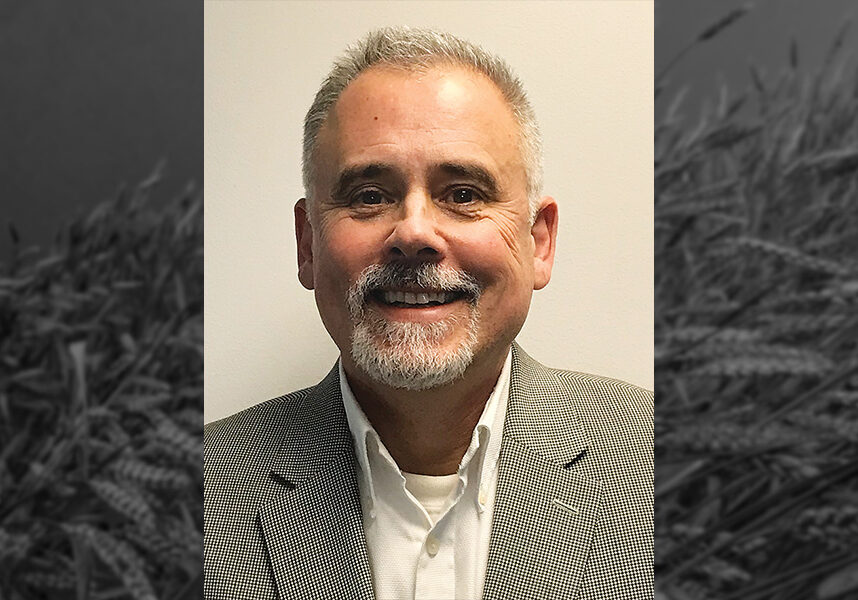
For 35 years, Chris Mertz has been helping the National Agricultural Statistics Service (NASS) tell the story of agriculture through numbers.
“I’m sure I’ve gotten biased over time, but I just think any story is better when you toss in some figures,” he laughed. “It’s exciting to see people see the value in numbers. Who doesn’t see value in numbers?”
Mertz is a NASS regional director based in Olympia, Wash. His office gathers statistics on agriculture in Alaska, Idaho, Oregon and Washington.
Mertz grew up in Oregon. While farming is in his family’s background — Mertz’s grandparents were farmers in Minnesota and North Dakota and his great-great-grandparents grew wheat outside of Rockford, Wash. — he didn’t grow up on a farm. Instead, he worked for a farming neighbor and raised hogs and sows. He graduated from Culver High School in Culver, Ore., where he was involved in the FFA program. He also met Carla, his sister’s best friend and his future wife, in high school. After graduation, Mertz attended Oregon State University, majoring in agricultural resources management, and California Polytechnic State University in San Luis Obispo, where he received an advanced degree in agricultural business management. It was at Cal Poly doing research in the library for a trading commodities class where Mertz had his first brush with the agency that has defined his career.
“I was really not very good at making decisions on trading commodities. At that time, NASS had offices in individual states. I saw there was one in Portland. I like numbers. I like agriculture. If I send a resume to these guys, I might get back up to Oregon,” he recalled thinking. Fortunately, the Portland office did have an opening. “Typically, NASS doesn’t start people in their home state. My excuse was I was living in California. They were able to make me an offer and have me come up to Portland.”
Beginning in 1987, Mertz and his family spent four years in Portland. A change in their living situation — their landlord decided to sell the home they were renting — prompted them to consider relocating.
“I was picky on where I wanted to move to. The agency offered opportunities in several other locations, but I was not showing much interest. Then, there happened to be an opening in New Mexico,” he explained. The family jumped at the opportunity to move to Las Cruces, N.M., where they would stay for nine years. “It could have potentially been the last stop (for me). It was definitely a different environment than Portland. It is high desert, and it reminded me of Oregon. Some of the mountains reminded me of Bend. It was a great opportunity.”
The next career move took the Mertz family to Washington, D.C., where Mertz was in charge of the agricultural resources management survey at the national level.
“I’ve always kind of worked on that survey, where you measure financial health, collect expenses and income. You can calculate a balance sheet and an income statement from the data you report. That kind of information has always interested me,” he said.
In 2006, Mertz found himself headed back west to Portland as the state director for Oregon. That lasted until 2013, when the agency restructured, merging state offices into regional offices, and he became the regional director in Olympia. The past 35 years, Mertz said, have flown by, helped by the work NASS does that involves so many different commodities.
“Most people can have a nice variety of tasks and responsibilities in their (NASS) career, and you get to learn many new things and work with lots of different people,” he said.
Some of the things that Mertz said he appreciates most about NASS is the drive by its employees to collect and publish the most accurate data possible, as well as the nonpolitical nature of the agency’s work. There are no political appointees and no outside influence on the data. Even the secretary of agriculture doesn’t see reports until after they are released.
For all the farmer flack NASS sometimes gets about its surveys and questions, the information the agency gathers is vital to many Farm Service Agency (FSA) programs such as the Conservation Reserve Program or the Agriculture Risk Coverage and Price Loss Coverage programs. But being on the receiving end of a producer’s annoyance with being asked personal questions can be taxing. What keeps Mertz making calls?
“Because the next person says something positive or is utilizing that data for a certain purpose for their farm, and we can talk about that,” he said. “Most of the time, when I get to call, it’s got to be an opportunity because you can’t walk into it being defeated. I might get to learn something about their operation. Or they might not be unhappy with me, they’re just taking it out on me and my organization. It’s really a learning opportunity, and sometimes we might get to change on how we sell a particular survey.”
It’s almost unthinkable now, but when Mertz first started with NASS, there were only two personal computers in the whole office (even harder to imagine was those computers only had 20 MB hard drives).
“We took turns working on spreadsheets. We used to have big rooms of people that just keyed in data all day long,” he said. “We don’t have a lot of that now because you can report online, and when we are calling from data collection centers or enumerators, the enumerator types directly into an iPad, which goes directly into our system.”
The emergence of computers has also had a direct impact on the number of NASS staff. Even as NASS has added more surveys, including the Census of Agriculture, which became NASS’s responsibility in 1997, the overall number of staff members has decreased. In addition, the past two years of working remotely has changed how NASS employees work. The agency is offering its employees the opportunity to permanently telework or work remotely. Mertz currently oversees 27 people in the regional office, most of whom are teleworkers.
Another change Mertz has seen is more awareness of how the data NASS collects is being used. Lately, he’s been working closely with FSA State Executive Director Jon Wyss and Michelle Hennings, executive director of the Washington Association of Wheat Growers, to address how crop share vs. cash rents are being reported.
“We have multiple organizations, government agencies and a commodity group talking. I feel very hopeful and feel good because people are communicating, more people might be understanding what the importance is in making sure that they respond (to surveys),” Mertz said. “When I see commodity groups use data, that’s what gets me excited. That’s what keeps me and my folks excited every day, somebody using the data for the good of agriculture.”
To learn more about Washington agriculture through NASS statistics, visit the state website.





